Dhanyakuria, the village of castles and mansions in North 24 Parganas of West Bengal, blends history with magical beauty of a Disney-sque look to give you an experience of a Gothic, English countryside. And it's extremely popular among the tourists for Dhanyakuria Rajbari and other mansions.
You might have come across villages and towns with many temples, but hardly any village of mansions as Dhanyakuria, which is known mainly for the Dhanyakuria Rajbari. For example, Bishnupur in the district of Bankura, West Bengal, is famous for its multiple terracotta temples that are located within a short radius. However, there's almost no village except one which has multiple castles - that is, no other except the Village of Castles and Mansions of West Bengal - Dhanyakuria, which boasts of the famous Dhanyakuria Rajbari and the Castle at Dhanyakuria.
Located in the district of North 24 Parganas, West Bengal, Dhanyakura, with the magnificent Dhanyakuria Rajbari, is the perfect spot for a weekend trip from Kolkata. It is about 55 kilometers from the heart of the city. A two-hour drive from the city can take you to a serene village, where history speaks through the large palatial mansions of Dhanyakuria, which were once lively and teeming from dawn to dusk, but remain mostly deserted these days.
Planning a Trip to Dhanyakuria
Winter had set in. The temperatures were already dipping. It was the perfect time for a trip. However, because of the Coronavirus Pandemic, we could not think of going on a long tour. Instead, we were searching for destinations that we could visit on a day trip from Kolkata. This is when we learnt about Dhanyakuria and the famous Dhanyakuria Rajbari.
We were keen to visit Chandraketugarh, an archeological site in North 24 Parganas, West Bengal, dating back to almost 3rd Century B.C. While researching on Chandraketugarh, we came across the name of the village of Dhanyakuria. This tourist spot located at a distance of only 10 kilometers from the Chandraketugarh Museum and with a plethora of castles or palaces, such as Gaine Rajbari, also popular as Dhanyakuria Rajbari, Gaine Castle, or Ballav Bari seemed interesting almost immediately.
Are you looking for a Dhanyakuria Travel Guide to explore interesting tourist places in the village and find sightseeing tours?
You're surely going to be disappointed because no such thing is available, which lists the things to see in Dhanyakuria.
We found only a few good articles and writeups on the internet and planned our trip based on them. And we are glad we did, as this place is an amazing tourist location.
Although there aren't many things to see in Dhanyakuria, a glimpse at the history of this otherwise unknown village through the outstanding palaces, mansions, and marvelous castle make it a place to visit. That's why tourists plan their visit to Dhanyakuria these days.
So, we decided not to wait and immediately planned our trip to this village of castles and mansions in West Bengal and visited the place to find the things to see in Dhanyakuria.
Best Time to Visit
Dhanyakuria is not very far from Kolkata and the weather there isn't extremely different from West Bengal's capital city as well. Therefore, it is a good decision to visit this village of castles near Kolkata during winter. Therefore, if you want to visit this village, plan it between November and February, when the weather is pleasant. As you need to go around the place to view the mansions, it is good to avoid the summer and monsoon months.
How to Reach Dhanyakuria
If you're traveling from Kolkata, reaching this village of castles and mansions is not difficult. It's just a two-hour drive from Kolkata. However, if you're looking at how to reach Dhanyakuria, you can find various ways.
You can also take a local train from Sealdah Station to reach Basirhat Station and take an auto or rickshaw from there for sightseeing. You can also get down at Kankra Mirzanagar Railway Station, which is close to this village of palaces and mansions.
It's not difficult to reach Barasat from Kolkata. From there you can board a bus and get down at the Basirhat bus stop. Autos and rickshaws are available from there as well. You can book an auto for the whole day to see various mansions, including the Dhanyakuria Rajbari.
They can take you through the lanes of this amazing town decked with palaces and castles that seem to pop out of books of European Fairy Tales.
Our Journey Starts
We started early in the morning in our car after completing our breakfast at the famous sweet shop Maharani near Deshapriya Park. Then we headed toward Science City. We drove through Rajarhat to cross Kharibari and took a right turn at Taki Road near Deganga. We drove past Chandraketugarh near the Berachampa Crossing and took a left turn at Nehalpur to reach this village of castle and mansions in West Bengal.
A Glimpse at the History of the Village
Even 300 years ago, this place was a part of the Sunderbans. Thick forests covered the area and there were quite a few meandering creeks of saline water. However, a person called Jagannath Das cleared the forests away and converted the forests into a land fit for living. He settled down in this village with his family in 1742. After that, several families came and settled here. These included families, such as Ballavs, Gaines, Mandals, and Sawoos. Many of them had become rich by trading in rice and sugarcane. They built grand mansions as garden retreats or baganbari in the village. Many of these large houses or mansions here have been constructed following medieval European architecture, which makes them stand out even today.
Many of the families who settled here played an important role in the development of the area. For example, Upendranath Sawoo and Mahendranath Gaine were instrumental in establishing the first English-medium school in the village in 1885. Sawoo also played an important role in building a charitable hospital, the Dhanyakuria Rural Hospital, as well as a girls' school in the area in 1893.
The Village of Castles
At first glance, Dhanyakuria appears like any other small village of West Bengal. The narrow road that entered the village from the main road meandered through a number of small houses. They were dotted here and there with an odd pond. There was also a large field where young people from the village had gathered to spend their time playing cricket on a sunny winter morning.
What
sets this village apart is the glimpse of more than a few mansions that clearly have touches
of European architecture. At first look, they seem like many other buildings of Kolkata, which were built by The first castle was built there by the Dutta family. However, it's the almost dilapidated Gaine Bagan
Bari or the Gaine Castle, which is surely the gem in the crown of this place. However, there are also
a few other mansions that attracted our attention. These include:
- Gaine Rajbari or the Gaine Palace
- Sawoo Mansion (Sahoo Mansion or Sau Bari)
- Ballav Bari or the Ballav Mansion
Gaine Castle or Gaine Baganbari
The Gaine family was one of the major industrialists of the region and owned a number of jute mills. This castle, which was the garden retreat of the family, was built over a century ago by Gobinda Chandra Gaine. The construction continued over the years and his son Mahendranath Gaine also became involved in supervising it.
The portico of the Gaine Castle or the Gaine Baganbari, on the right side of the gate, is constructed following European architectural styles. There are human figures constructed on the roof of the portico. This building is completely dilapidated now and we felt that it might not be the right decision to enter it.
A gravel road, which leads to the Gaine Castle, is now mostly covered in outgrown grasses from the lawns around it. There's also a water body right in front of the castle. The reflection of the castle in the waters is a scene to marvel at.
Gaine Rajbari
European architecture has also played a major role in shaping this magnificent mansion called Gaine Rajbari that would look almost out of place in any other village of West Bengal but this one.
Sawoo Mansion
Just outside the gate of the mansion is an Indian Bael tree, which also seems as old as the building.
Close to the Sawoo Mansion is the Sawoo Garden House or the Sawoo Baganbari. Although it is not as grand as the main residential house of the Sawoos, it also stands testimony to the history of the place.
Ballav Mansion
The feature of the Ballav Mansion that makes it stand out is the presence of a few human structures at the top of the house. And these human figures surely appear as large dolls. Some of these figures are those of Royal people, while there are others of Indian guards. There's a design of a peacock right in the middle of the wall guarding the roof. These dolls on the roof have made the house well known among the locals as Putul Bari or the House of Dolls.
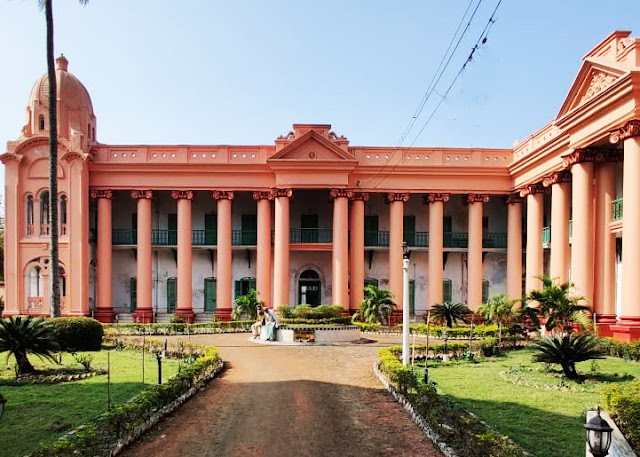
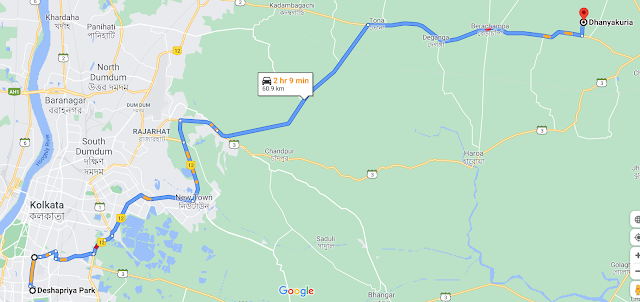
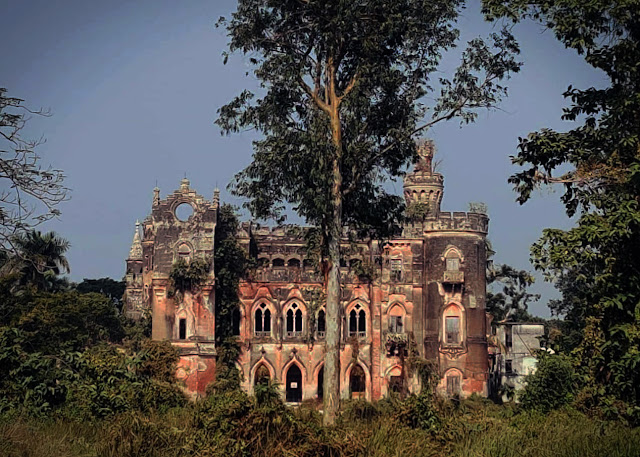
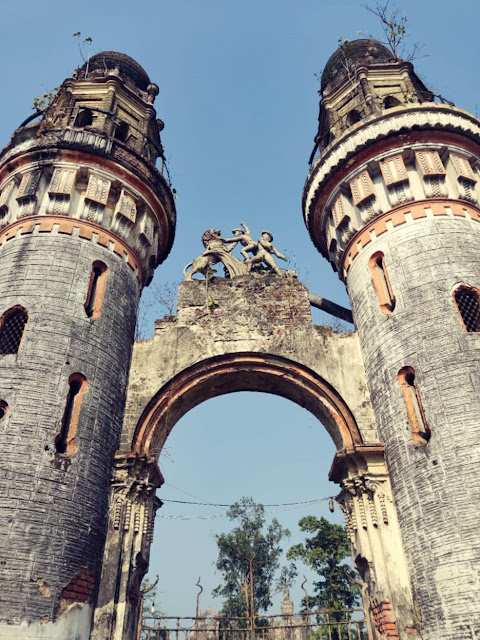
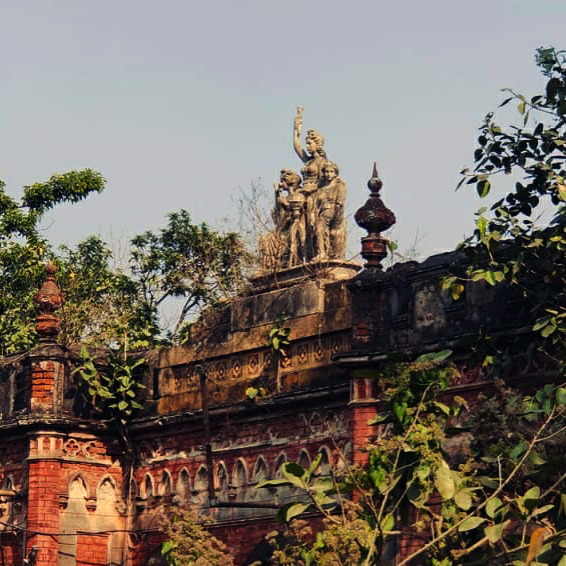
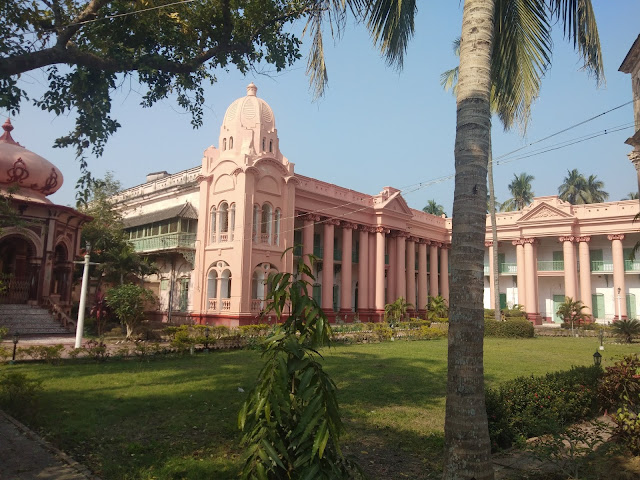
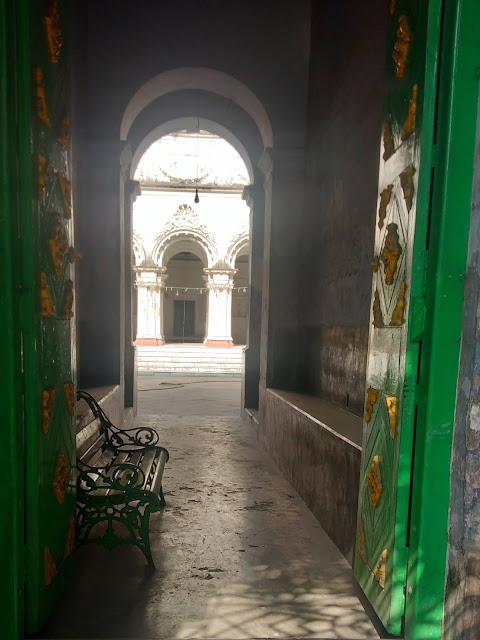
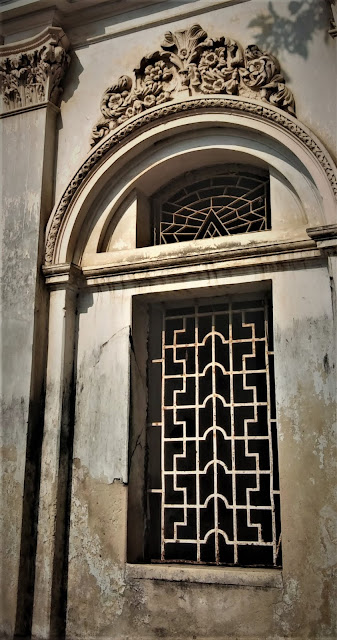
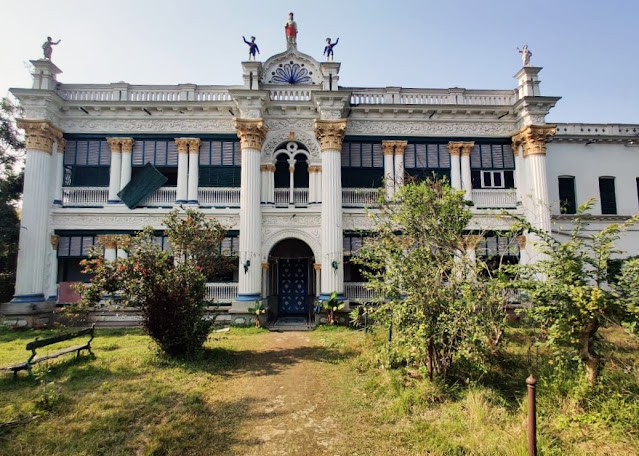

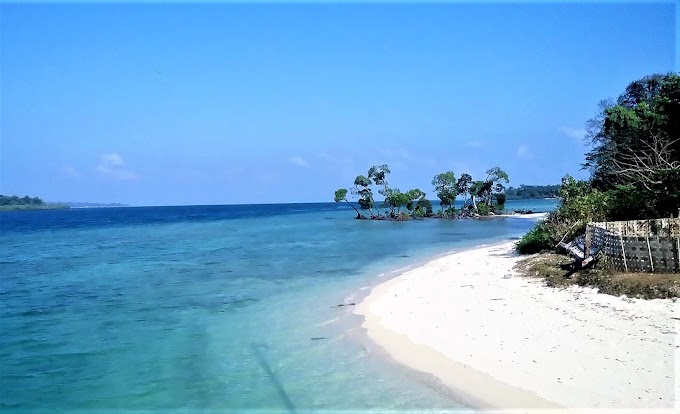
0 Comments